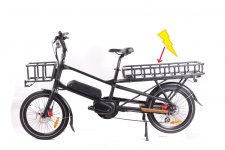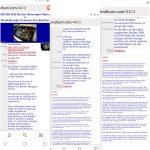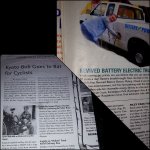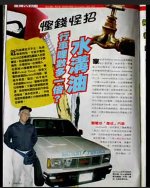lakeyboi12
10 µW
Hi all. I have 4 of these off-the-shelf 12 volt LiFePO4 box batteries previously used on a boat.

They are 100 Ah "mini" batteries. Each one is about 10 x 5 inches and weighs 19 lbs. I don't take the boat out so often anymore so I had an idea to build an e-bike using the spare batteries. My plan is to wire the 4 batteries in series to create a 48 volt bank to power the motor rather than the small in-frame batteries that typically come on e-bikes. Since the batteries are quite heavy, they will be in a plastic or wood battery box and secured onto a cargo bike or trike such as:


I will go for a bike with at least 100 lbs rated capacity on the rear rack for safety margin. It may already be an electric bike or may need a conversion kit put onto it. I weigh about 140 lbs, batteries might total to 90 lbs and some of the bikes I'm looking at are about 50-70 lbs. Let's assume a total weight of 300 lbs.
Questions:
What motor would power this bicycle sufficiently? I don't need to go fast, 40 km/h top speed is more than enough for me. At least a 750W mid drive or 1kW hub motor seems appropriate. The bicycle will need a lot of torque to move 300 lbs especially uphill, so I am leaning towards the mid drive.
Does this setup seem like it will give solid range? 100km throttle only?
Is there anything I am overlooking for this build idea? I have built 2 e-bikes before but they were both plug and play kits. Would this be difficult or impractical?

They are 100 Ah "mini" batteries. Each one is about 10 x 5 inches and weighs 19 lbs. I don't take the boat out so often anymore so I had an idea to build an e-bike using the spare batteries. My plan is to wire the 4 batteries in series to create a 48 volt bank to power the motor rather than the small in-frame batteries that typically come on e-bikes. Since the batteries are quite heavy, they will be in a plastic or wood battery box and secured onto a cargo bike or trike such as:


I will go for a bike with at least 100 lbs rated capacity on the rear rack for safety margin. It may already be an electric bike or may need a conversion kit put onto it. I weigh about 140 lbs, batteries might total to 90 lbs and some of the bikes I'm looking at are about 50-70 lbs. Let's assume a total weight of 300 lbs.
Questions:
What motor would power this bicycle sufficiently? I don't need to go fast, 40 km/h top speed is more than enough for me. At least a 750W mid drive or 1kW hub motor seems appropriate. The bicycle will need a lot of torque to move 300 lbs especially uphill, so I am leaning towards the mid drive.
Does this setup seem like it will give solid range? 100km throttle only?
Is there anything I am overlooking for this build idea? I have built 2 e-bikes before but they were both plug and play kits. Would this be difficult or impractical?




